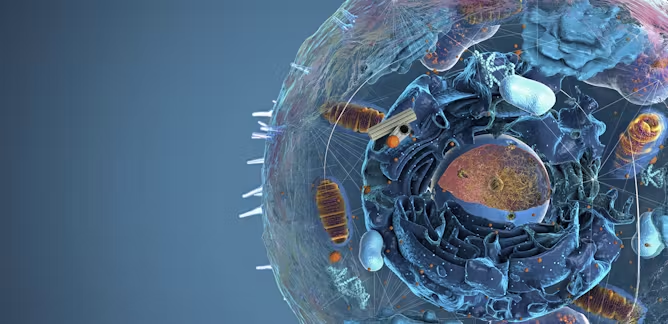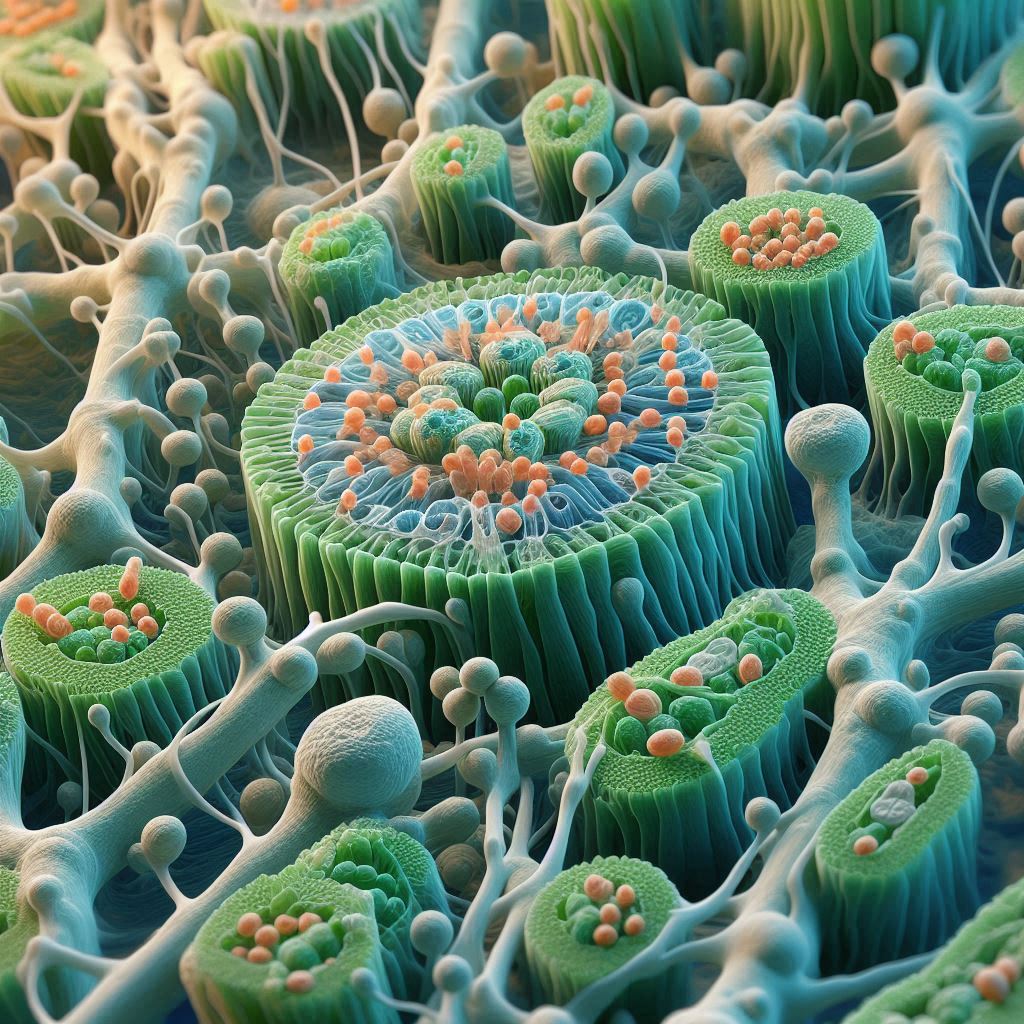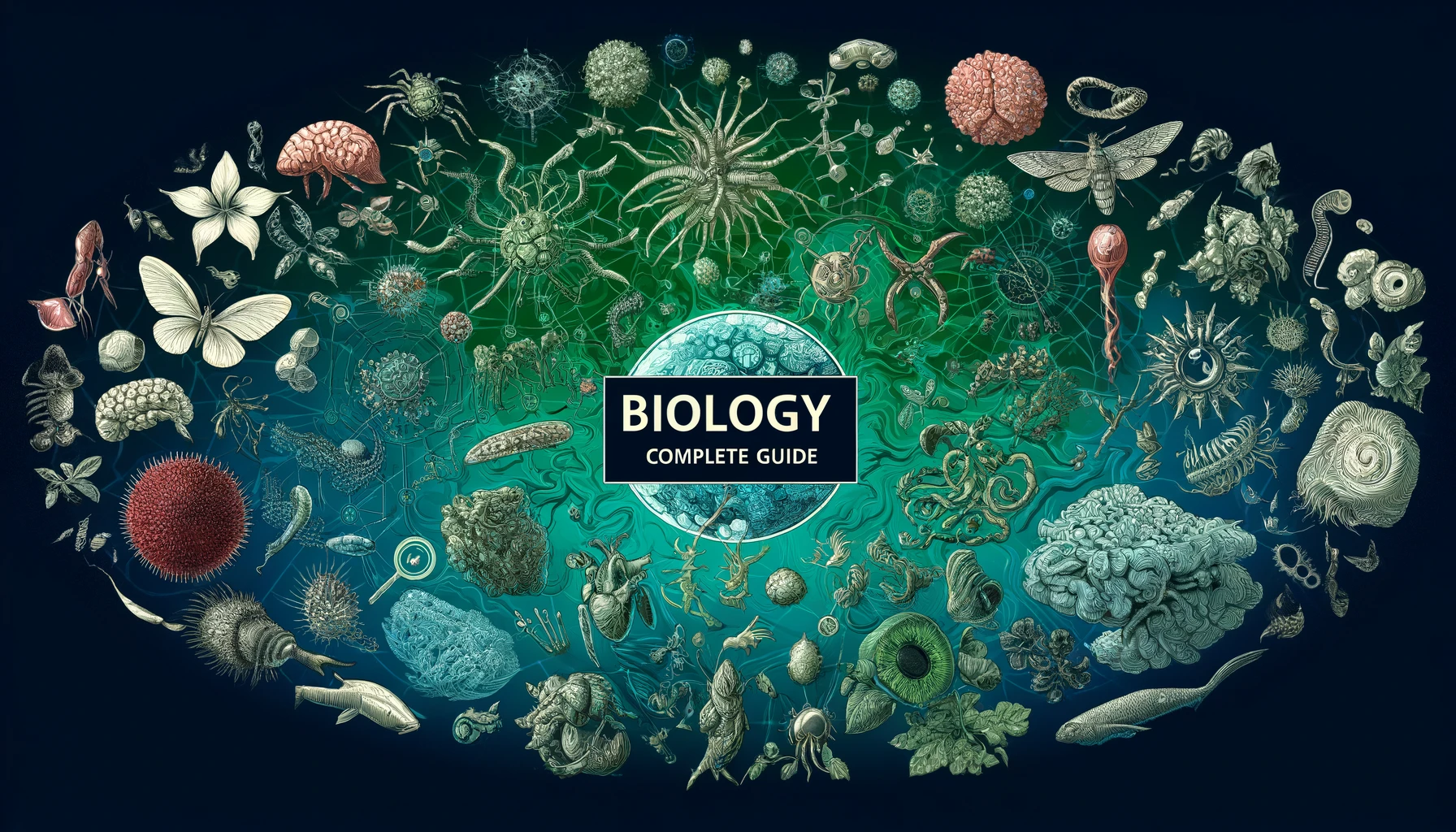Biology, the study of life and living organisms, is a diverse and dynamic field that requires a deep understanding of various concepts, terminologies, and methodologies. Whether you’re a high school student preparing for exams, an undergraduate delving into specialized topics, or simply passionate about biology, grasping the key objectives and associated terms is essential for academic success and practical application.
In this comprehensive guide, we will explore Objective 1, Objective 2, and Objective 3—each outlining crucial skills and terminologies that students must master. By understanding these objectives and the associated terms, you can enhance your learning strategies, excel in assessments, and build a solid foundation in biology.
Objective 1: Demonstrating Knowledge and Understanding
Objective 1 focuses on the ability to recall, recognize, and comprehend biological facts, concepts, and terminology. Mastery of this objective ensures that students have a solid foundational knowledge, which is crucial for more advanced studies and practical applications in biology.
Define
Definition:
Provide the precise meaning of a word, phrase, or physical quantity.
Example in Biology:
Define “photosynthesis.”
Photosynthesis is the process by which green plants, algae, and certain bacteria convert light energy, usually from the sun, into chemical energy stored in glucose, using carbon dioxide and water, and releasing oxygen as a byproduct.
Tip:
When asked to define a term, ensure clarity and conciseness. Use accurate scientific language and avoid unnecessary jargon.
Draw
Definition:
Represent by means of pencil lines; create a visual depiction of a concept or structure.
Example in Biology:
Draw a diagram of a eukaryotic cell.
Include organelles such as the nucleus, mitochondria, endoplasmic reticulum, Golgi apparatus, lysosomes, and the cell membrane.
Tip:
Ensure that your drawings are neat and accurately labeled. Use standard conventions for diagrams to make them easily understandable.
Label
Definition:
Add labels to a diagram to identify its parts.
Example in Biology:
Label the parts of a plant cell.
Label components like the chloroplast, cell wall, vacuole, nucleus, and mitochondria.
Tip:
Place labels clearly and directly on the parts they describe. Use a legible font and avoid overcrowding the diagram.
List
Definition:
Give a sequence of names or other brief answers with no explanation.
Example in Biology:
List the stages of mitosis.
- Prophase
- Metaphase
- Anaphase
- Telophase
Tip:
Present information in a logical order, using bullet points or numbering to enhance readability.
Measure
Definition:
Find a value for a quantity.
Example in Biology:
Measure the length of a specific organelle using a microscope scale.
Tip:
When measuring, use appropriate tools and units. Ensure accuracy by following standardized measurement procedures.
State
Definition:
Give a specific name, value, or other brief answer without explanation or calculation.
Example in Biology:
State the molecular formula of glucose.
C₆H₁₂O₆
Tip:
Provide only the required information succinctly. Avoid adding unnecessary details or explanations.
Objective 2: Applying Methods to Communicate Scientific Information
Objective 2 emphasizes the ability to effectively communicate scientific information. This involves not only understanding biological concepts but also presenting them clearly and accurately through various methods.
Annotate
Definition:
Add brief notes to a diagram or graph.
Example in Biology:
Annotate a graph showing the rate of photosynthesis under different light intensities.
Add notes explaining trends, peaks, or anomalies observed in the data.
Tip:
Keep annotations concise and relevant. Highlight key points that aid in the interpretation of the diagram or graph.
Apply
Definition:
Use an idea, equation, principle, theory, or law in a new situation.
Example in Biology:
Apply the principle of natural selection to explain antibiotic resistance in bacteria.
Tip:
Ensure that the application is relevant and logically extends the original idea or principle to the new context.
Calculate
Definition:
Find a numerical answer showing the relevant stages in the working (unless instructed not to do so).
Example in Biology:
Calculate the rate of cell division if a cell undergoes mitosis every 30 minutes over a 3-hour period.
Tip:
Show all calculation steps clearly. Use correct formulas and units to arrive at the accurate numerical answer.
Describe
Definition:
Give a detailed account.
Example in Biology:
Describe the structure and function of the mitochondria.
Tip:
Provide comprehensive information, covering all relevant aspects. Use clear and precise language to convey details effectively.
Distinguish
Definition:
Give the differences between two or more different items.
Example in Biology:
Distinguish between prokaryotic and eukaryotic cells.
Tip:
Highlight clear and specific differences. Compare multiple aspects to provide a thorough contrast.
Estimate
Definition:
Find an approximate value for an unknown quantity.
Example in Biology:
Estimate the population size of a particular species in a given habitat based on sampling data.
Tip:
Use logical reasoning and relevant data to arrive at a reasonable approximation. Clearly indicate that the value is an estimate.
Identify
Definition:
Find an answer from a given number of possibilities.
Example in Biology:
Identify the type of tissue based on its structural characteristics.
Tip:
Carefully read the question and options. Use elimination methods if unsure to improve accuracy in identification.
Outline
Definition:
Give a brief account or summary.
Example in Biology:
Outline the process of cellular respiration.
Tip:
Provide a structured summary, highlighting the main points without delving into detailed explanations.
Objective 3: Formulating, Analyzing, and Evaluating Scientific Concepts
Objective 3 involves higher-order thinking skills where students must formulate hypotheses, analyze data, and evaluate scientific explanations. Mastery of these skills is crucial for conducting research, solving complex problems, and advancing scientific knowledge.
Analyse
Definition:
Interpret data to reach conclusions.
Example in Biology:
Analyse the data from an experiment testing the effect of light intensity on plant growth.
Tip:
Break down the data systematically. Identify patterns, correlations, and outliers to draw informed conclusions.
Comment
Definition:
Give a judgment based on a given statement or result of a calculation.
Example in Biology:
Comment on the significance of increased enzyme activity in a biochemical reaction.
Tip:
Provide a reasoned judgment. Base your comments on evidence and logical reasoning rather than personal opinions.
Compare
Definition:
Give an account of similarities and differences between two (or more) items, referring to both (all) of them throughout.
Example in Biology:
Compare the structures of DNA and RNA.
Tip:
Ensure a balanced comparison by discussing both similarities and differences. Use parallel structure to enhance clarity.
Construct
Definition:
Represent or develop in graphical form.
Example in Biology:
Construct a phylogenetic tree illustrating the evolutionary relationships among selected species.
Tip:
Use accurate and clear graphical representations. Ensure that all elements are properly labeled and logically arranged.
Deduce
Definition:
Reach a conclusion from the information given.
Example in Biology:
Deduce the possible causes of a sudden decline in a fish population based on environmental data.
Tip:
Use logical reasoning to connect evidence to conclusions. Ensure that deductions are supported by the given information.
Derive
Definition:
Manipulate a mathematical relationship(s) to give a new equation or relationship.
Example in Biology:
Derive the equation for calculating the population growth rate based on given parameters.
Tip:
Show all mathematical steps clearly. Ensure that the derived equation is logically consistent with the original relationship.
Design
Definition:
Produce a plan, simulation, or model.
Example in Biology:
Design an experiment to test the effect of pH on enzyme activity.
Tip:
Create a detailed and logical plan. Consider variables, controls, and methodologies to ensure the experiment’s validity.
Determine
Definition:
Find the only possible answer.
Example in Biology:
Determine the genotype of an organism exhibiting a dominant phenotype given the parental genotypes.
Tip:
Use definitive logic and evidence to arrive at the correct answer. Avoid assumptions beyond the provided information.
Discuss
Definition:
Give an account including arguments for and against the relative importance of various factors, or comparisons of hypotheses.
Example in Biology:
Discuss the role of genetic engineering in modern agriculture, considering both benefits and ethical concerns.
Tip:
Present a balanced discussion. Provide arguments for multiple perspectives and evaluate their relative merits.
Evaluate
Definition:
Assess the implications and limitations.
Example in Biology:
Evaluate the effectiveness of a new drug based on clinical trial data.
Tip:
Critically assess all aspects of the subject. Highlight both strengths and weaknesses to provide a comprehensive evaluation.
Explain
Definition:
Give a detailed account of causes, reasons, or mechanisms.
Example in Biology:
Explain the mechanism of action of antibiotics in combating bacterial infections.
Tip:
Provide a clear and thorough explanation. Use appropriate biological terminology and ensure logical flow.
Predict
Definition:
Give an expected result.
Example in Biology:
Predict the outcome of increasing fertilizer use on plant growth and soil health.
Tip:
Base predictions on established scientific principles and relevant data. Clearly state the rationale behind your predictions.
Show
Definition:
Give the steps in a calculation or derivation.
Example in Biology:
Show the calculation steps for determining the rate of photosynthesis based on oxygen output.
Tip:
Present each step logically and clearly. Ensure that the final answer is accurate and supported by the calculation process.
Sketch
Definition:
Represent by means of a graph showing a line and labeled but unscaled axes but with important features clearly indicated.
Example in Biology:
Sketch a graph illustrating the relationship between enzyme concentration and reaction rate.
Tip:
Focus on accurately representing key features rather than perfect scaling. Use clear labels and a neat drawing style.
Solve
Definition:
Obtain an answer using algebraic and/or numerical methods.
Example in Biology:
Solve for the missing variable in the equation representing population growth.
Tip:
Apply appropriate mathematical techniques. Double-check calculations to ensure accuracy.
Suggest
Definition:
Propose a hypothesis or other possible answer.
Example in Biology:
Suggest a possible explanation for the decline in pollinator populations.
Tip:
Base suggestions on existing knowledge and evidence. Present logical and feasible hypotheses.
Conclusion
Mastering Objective 1, Objective 2, and Objective 3 is fundamental for excelling in biology. These objectives not only guide the structure of assessments but also shape your approach to learning and understanding biological concepts. By thoroughly understanding and effectively applying the associated terms, you can enhance your academic performance, conduct meaningful research, and contribute to advancements in the biological sciences.
Final Tips for Success
Active Engagement:
Participate actively in classes, laboratories, and study groups to reinforce your understanding of biological concepts.Consistent Practice:
Regularly practice using these terms in context through exercises, past papers, and real-life applications.Utilize Resources:
Leverage textbooks, online platforms, and educational tools to deepen your knowledge and refine your skills.Seek Feedback:
Obtain constructive feedback from teachers, peers, or tutors to identify areas for improvement and enhance your learning strategies.Stay Curious:
Cultivate a genuine interest in biology by exploring topics beyond your curriculum and staying updated with the latest scientific discoveries.
By integrating these strategies and diligently mastering the outlined objectives, you can achieve a comprehensive and nuanced understanding of biology, paving the way for academic excellence and a fulfilling career in the life sciences.
Frequently Asked Questions (FAQs)
1. Why are these objectives important in biology?
Answer:
These objectives outline the key skills and competencies required to understand, communicate, and critically evaluate biological information. They form the foundation for academic assessments, research, and practical applications in biology.
2. How can I effectively learn and remember these terms?
Answer:
Use active learning techniques such as flashcards, mnemonic devices, and regular practice. Engage in discussions, apply terms in context, and utilize visual aids like diagrams and charts to reinforce your memory.
3. Can these objectives apply to other science subjects?
Answer:
Yes, these objectives are based on Bloom’s Taxonomy and are applicable across various science disciplines, including chemistry, physics, and environmental science, to enhance comprehension and analytical skills.
4. How can I prepare for exam questions based on these objectives?
Answer:
Practice with past exam papers, engage in timed quizzes, and participate in study groups. Focus on understanding the underlying concepts and how to apply them in different contexts.
5. What resources can help me master these objectives?
Answer:
Utilize textbooks, online educational platforms like Khan Academy, interactive simulations, and seek guidance from teachers or tutors. Engaging with supplementary materials such as educational videos and biology journals can also be beneficial.
6. How do these objectives enhance my practical laboratory skills?
Answer:
They provide a framework for effectively conducting experiments, analyzing data, and communicating findings. Understanding these objectives ensures that you can design experiments, interpret results, and present scientific information accurately.
7. Are there any online tools to practice these terms?
Answer:
Yes, platforms like Quizlet offer flashcards and quizzes tailored to biology terms. Interactive websites and educational apps also provide exercises and games to reinforce your understanding.
8. How do these objectives align with higher education in biology?
Answer:
They form the basis for advanced studies and research in biology. Mastery of these objectives prepares students for university-level coursework, laboratory work, and scientific research projects.
9. Can I use these objectives to guide my independent study?
Answer:
Absolutely. They provide a structured approach to learning and can help you identify key areas to focus on, ensuring a comprehensive understanding of biological concepts.
10. How can I assess my progress in mastering these objectives?
Answer:
Regular self-assessment through quizzes, practice exams, and writing exercises can help you gauge your understanding. Seeking feedback from educators and peers can also provide valuable insights into your progress.






